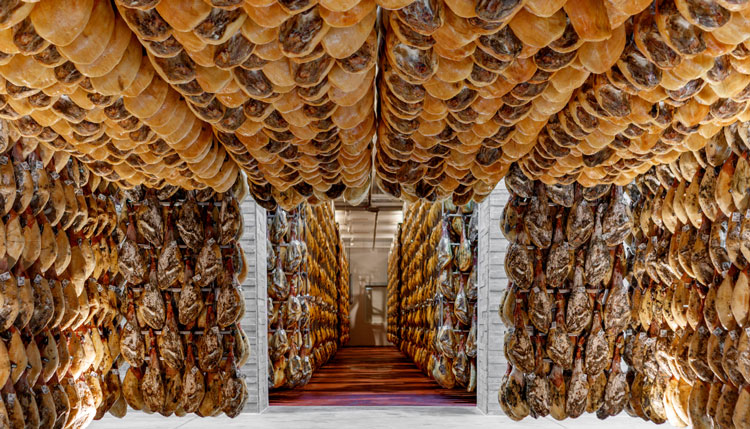The Diplomat
Twelve of the best Hungarian chefs, belonging to the Hungarian Mangalica Association, received training on cured ham on the 21st and 22nd of this month at the Ham Campus, located in the Segovian town of Carbonero el Mayor.
The aim of this meeting was to promote the presence of the rich Iberian delicacy in Hungarian gastronomy, especially the Mangalica breed, recovered from a small redoubt found there, in danger of extinction, in the 1990s.
In addition, there was a cooking session with Mangalica and Iberian pork products in which both the Hungarian visitors and some Spanish chefs took part.
One of the chefs who travelled from Budapest to attend this “masterclass” is Márk Molnár, who holds a Michelin star, runs several restaurants in his home country and, after twenty years drinking from Parisian, Vietnamese, Spanish, Japanese and Emirati gastronomy, defines his “palette” of flavours “between Tokyo and Barcelona”, like that of El Bulli, where he also learnt. “I want to work to make Hungarian mangalica as famous in the world as wagyu”, said the chef in an interview with Agencia Efe, in reference to the coveted Japanese breed, considered the “Iberian of beef”.
Referring to cured ham, especially Iberian ham, whose “artisanal” character he emphasised in a world of fast food and industrial production, he criticised that “it is a little sad to see how they make animals quickly to obtain a product and then throw everything else away”. In this sense, he also values the possibilities of using practically all the parts of the pig that Spanish gastronomy exploits, which is in line with the sustainability that he believes should prevail in the future of cuisine.
In his country of origin, cured ham is still “a novelty” and is hardly consumed, not even the mangalica breed, which is only produced there but is exported to countries such as Spain, France, Germany, the United States, Denmark and Belgium. This breed, a relative of the Iberian pig, is characterised by its thick hair, which looks like wool, and was recovered in the 1990s by the veterinarian and bromatologist Juan Vicente Olmos, general manager of the century-old Monte Nevado, which is behind the creation of the Campus del Jamón, inaugurated this year.
It has a flavour very similar to that of an Iberian cebo, of which experts highlight its strength, fluidity and oiliness, although with a slightly milder nuance than that of the Iberian peninsula, a detail that is attributed to a greater load of corn in the feed in the Hungarian variant. Márk Molnár intends to give cured ham a boost in his country: “But people are tasting it and it’s addictive. For me, even when I had little money to get through the month, buying a good ham was always my priority,” the expert recalls.
As part of this meeting, organised together with the Hungarian National Association of Mangalica Breeders, there was also a Spanish-Hungarian exchange with Spanish chefs to share their knowledge and recipes such as a false lasagne with pork rump, sirloin steak with various sauces, rice with bacon and red shrimp and pickled secret.






